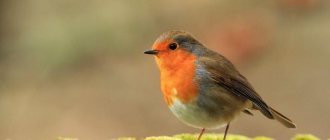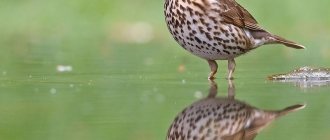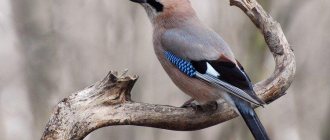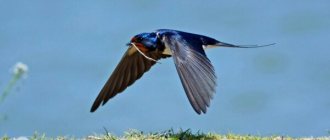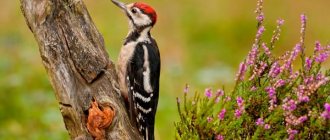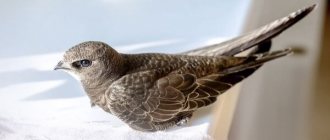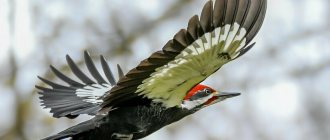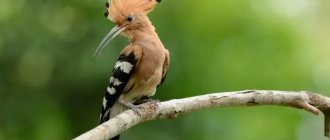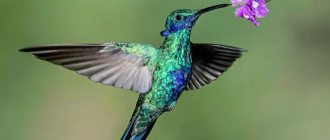Description of the bird
Residents of Eurasia and North America - songbirds of the waxwing genus - are distinguished by the beauty of their plumage and funny disposition. Their soft, silky and dense plumage is colored mainly in gray and brown tones with decorations of black, white, red and yellow on the feathers of the wings, tail and head. The head is also adorned with a black eye mask and a prominent feather tuft.
The size of these birds is small. The average body length is 20 cm, weight is about 60 g. Life expectancy in nature is 13 years.
What does it eat?
— Advertising —
The waxwing's diet changes with the seasons, but in general the bird is omnivorous and loves to eat.
In summer, it feeds on various insects, larvae, butterflies, mosquitoes, and dragonflies. And in winter it switches to feeding on berries and pecks at viburnum, rowan, juniper, lingonberry, barberry, rose hips and mistletoe. Sometimes the waxwing is also called "mistletoe", for its love for these white juicy berries.
The birds eat very, very quickly, swallowing the berries whole and not even chewing them.
Behavior
People often witness such a phenomenon as “drunk waxwings.”
This usually happens in the spring and autumn, when birds eat all the berries indiscriminately, among which fermented fruits fall.
The fermentation process can also begin due to a large number of eaten berries that ferment in the waxwing’s intestines. The most voracious individuals in spring and autumn are almost constantly in a state of intoxication.
In this case, the waxwing bird cannot control its behavior. The individual loses orientation in space and is unable to fly in a straight line.
Interesting! Until the 20th century, a waxwing knocking on a window was a source of bad omen. And only then did ornithologists explain this behavior of the birds as a state of intoxication in which they are unable to navigate their environment.
It is not uncommon to see drunken birds crashing into obstacles in their path. Because of this, birds can be injured or even die.
Photos of drunk waxwings
Where does it live?
— Advertising —
The nature of the waxwing's diet and life attracts it to life in coniferous and mixed forests in the northern regions of Europe, Asia and North America. These birds are usually very friendly and can fly into parks and gardens. Waxwings become secretive only during the nesting period.
About life
Having understood whether the waxwing is a migratory bird or not, it is worth talking about how the life of these birds works. So, they begin to build nests in early spring, but they use soft feathers rather than hard branches for bedding. It is here that the female will hatch the eggs, and the male will carefully feed his offspring. These birds feed mainly on berries in winter; they especially love rowan, barberry, mistletoe, raspberries, and rose hips (most berry bushes). As for the summer period, at this time waxwings eat the shoots of young animals, seeds, and ripened berries. An interesting fact will be that with their small beaks in flight, these birds can capture small midges, mosquitoes and even small butterflies. As for nutrition, waxwings eat a lot, trying to fill their stomachs with as much food as possible. It’s easy to find out where they feast, because under the branches of trees you can always find incompletely digested berries. However, this also has its own benefit, in this way the birds spread the young by scattering seeds throughout the area where they live.
Migratory behavior
This issue has long been controversial among scientists, but today the waxwing is recognized as a nomadic bird. Most of these birds are residents of northern regions, so in winter they unite in small flocks and move in search of food. The waxwing does not fly far and quickly returns to its native land.
Natural enemies
The waxwings were unable to escape the typical problems of small passerines. They are hunted by crows, magpies, hawks, owls and other large birds. In addition, weasels and martens are dangerous.
Photo: mobilemusic.ru
Birds of the Leningrad region: photos, names and descriptions (catalog)
Kinds
The family of true waxwings includes 3 species: common, Japanese and American waxwings. Similar species - black waxwing and black silk waxwing - already belong to the silky waxwing family.
Common waxwing
The bird's body length is up to 25 cm, weight is about 60 - 70 g. Both females and males are painted in a smoky pink-gray color, the throat, tail and stripe on the eyes are black. The black wings are decorated with white and yellow stripes, and red feathers are visible at their tips. There is also a yellow stripe along the edge of the tail. Birds have a crest on their head. Lives in taiga forests of the Northern Hemisphere.
Amur (Japanese) waxwing
This species is smaller in size than the common waxwing. The length of its body is about 16 cm. But its color is very similar and differs slightly only in the pronounced red stripes on the wings. The species is distributed in the north and east of Asia. It often goes to Japan and China for the winter.
Cedar (American) waxwing
Habitat: Northern USA and Canada. In winter, the species migrates to the south of Central America. The Cedar Waxwing is ocher-colored with a bright yellow belly and yellow tail feathers. The birds have a characteristic crest on their heads and a black mask over their eyes.
Male and female: main differences
Sexual dimorphism in birds of the true waxwing family is practically not expressed. But among their closest relatives - silky waxwings - the male and female are significantly different. The plumage of males is intensely black and shiny, while females are colored in modest gray-brown tones.
Keeping at home
Birds are kept in captivity, but they rarely become tame. In order for the waxwing to feel comfortable, several individuals are placed in a large enclosure, since the birds are very active and need space. In addition, in company they are more willing to produce their melodic trills.
What to feed
For waxwings, it is important to have a nutritious diet with foods containing carotenes to preserve their beautiful color. The diet includes carrots, cottage cheese, raisins, pieces of meat and insects. In summer, herbs, vegetables and fruits are added.
Waxwings love to eat, which means they excrete a lot of droppings. The floor of their enclosure is sprinkled with sawdust and cleaned frequently.
Waxwings. Features of bright hooded seals
With the onset of cold weather, birds that are bright for the city landscape appear on the rowan bushes. Among the usual sparrows, crows, and magpies, they look like noisy foreign guests. These are waxwings.
Breeding in captivity
Waxwings are bred at home. If the birds have created a pair, their diet is enriched with animal food - insects, ant eggs, and they try not to disturb or disturb the birds.
In one clutch, the female incubates from 3 to 7 bluish or purple eggs for about 2 weeks. All this time the male takes care of her nutrition. Newborn chicks need at least 3 weeks to become strong and fly out of the nest.
Interesting Facts
- The waxwing has very tenacious claws, which helps the bird stay on branches and peck berries that are most difficult to reach. But this same feature prevents the waxwing from moving on the ground, which it does extremely rarely and reluctantly.
- During the courtship period, the male offers the female a berry or other treat. If the female accepts it, then the birds create a pair.
- Waxwings are real gluttons; as soon as they see a bush or tree with beautiful berries, they will not stop until they peck them all. Therefore, some of the fruits are excreted from their bodies undigested, which promotes the spread of plants.
- When a waxwing eats a lot of berries in winter, fermentation processes begin in its stomach, as a result of which the bird becomes disoriented as if “drunk.” In this state, waxwings often die by bumping into objects and losing their way. A century ago, when people did not know about this feature, it was considered a bad sign if a waxwing hit a window.
Waxwing diet
These birds feed on both plant foods and insects. At the beginning of spring, waxwings do not disdain tree shoots and buds. But the best time for these birds is summer, when small animals can be found in abundance. Favorite delicacy of waxwings:
- midges;
- mosquitoes;
- flies;
- small dragonflies;
- aphid;
- butterflies.
Birds have high speed and maneuverability, so they are able to catch these living creatures right in the air. By the way, waxwings eating insects is a useful contribution to nature, since birds reduce the number of pests.
With the onset of autumn and winter cold weather, the main diet of birds consists of rowan berries, viburnum, bird cherry, juniper and buckthorn. The waxwing is very fond of the white berries of mistletoe, which is why the birds are popularly nicknamed “mistletoe.” In winter, individuals of this genus do not disdain simple apples.
Common waxwings eating mistletoe berries
Waxwings are very voracious birds. They will continuously stuff their crops with berries until the branches remain completely gnawed. All the food eaten does not have time to be digested in the birds’ stomach, so the berries are often excreted entirely from the body. Thanks to this, waxwings are good seed dispersers.
By the way, waxwings can very rarely be seen eating berries on the ground. If the tree is not tall, birds prefer to collect food by hanging their heads down from the lower branches.
THIS IS INTERESTING . Often gluttony of birds leads to their death. In Canada, American waxwings raid blueberry plantations. To protect their crops, farmers spray the berries with poison, which often kills birds.
Common waxwing intoxicated by fermented berries
In winter, in urban environments, you can sometimes see waxwings lying on the ground. At first glance, the birds seem dead, but in fact they are just drunk: the birds overeat on fermented berries, which is why they fall from the trees. In addition, in a drunken state, birds cannot fly straight, and there have often been cases when entire flocks of waxwings crashed into high-rise city buildings - the birds followed the drunken leader.
Intoxicated waxwings are also found in the spring, when the birds get drunk on fermented maple sap.
